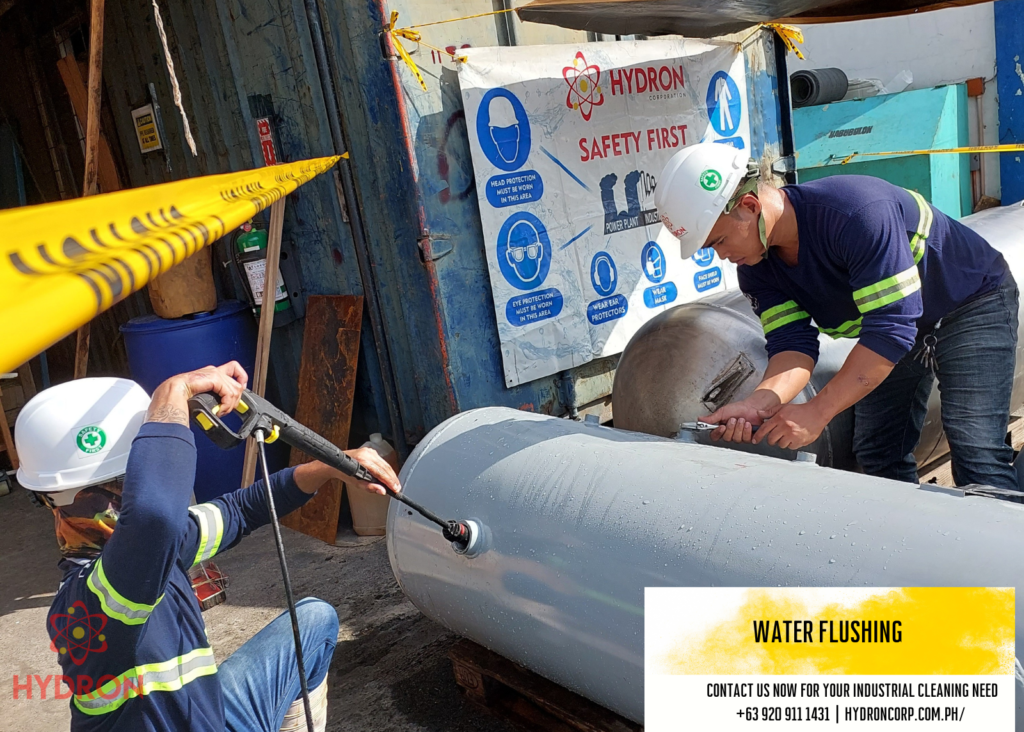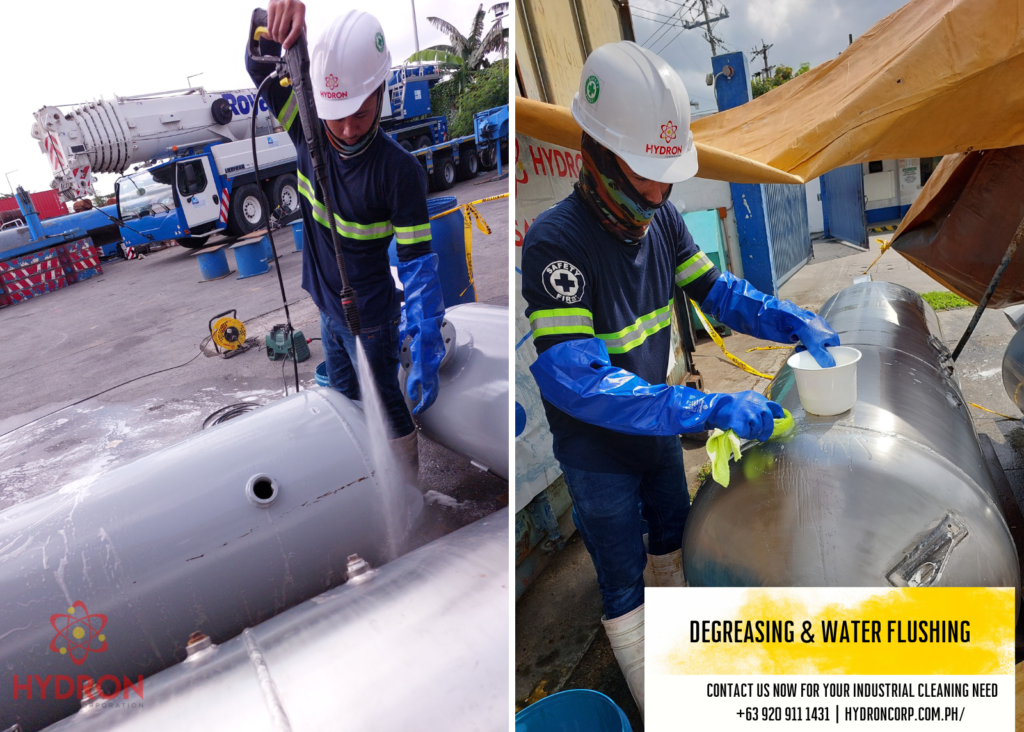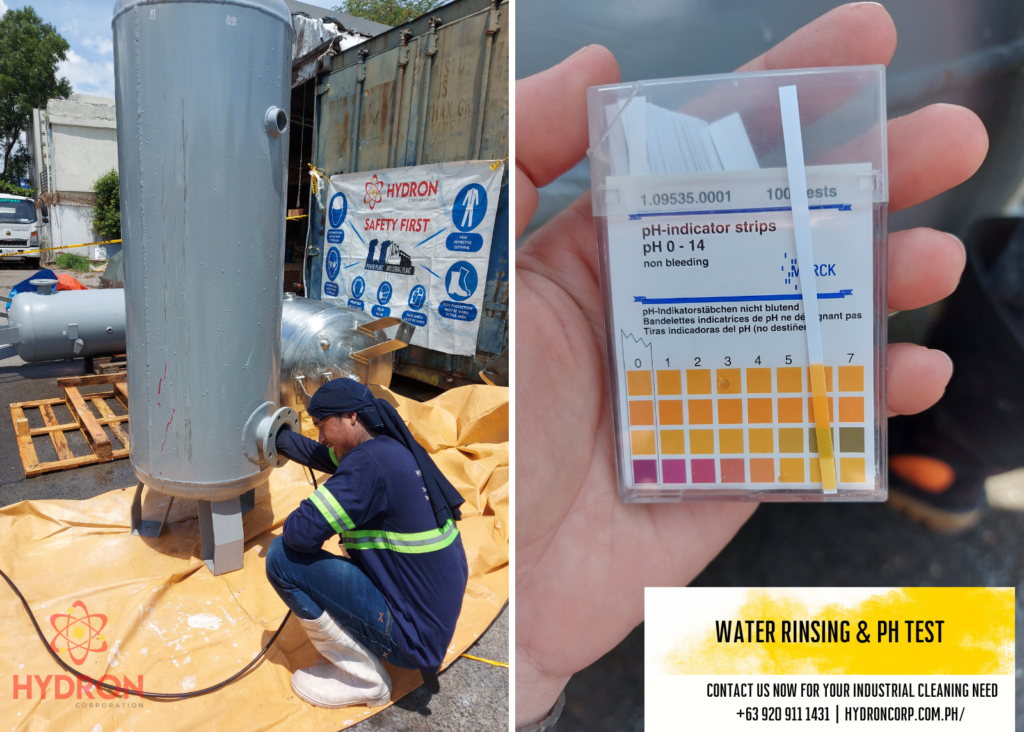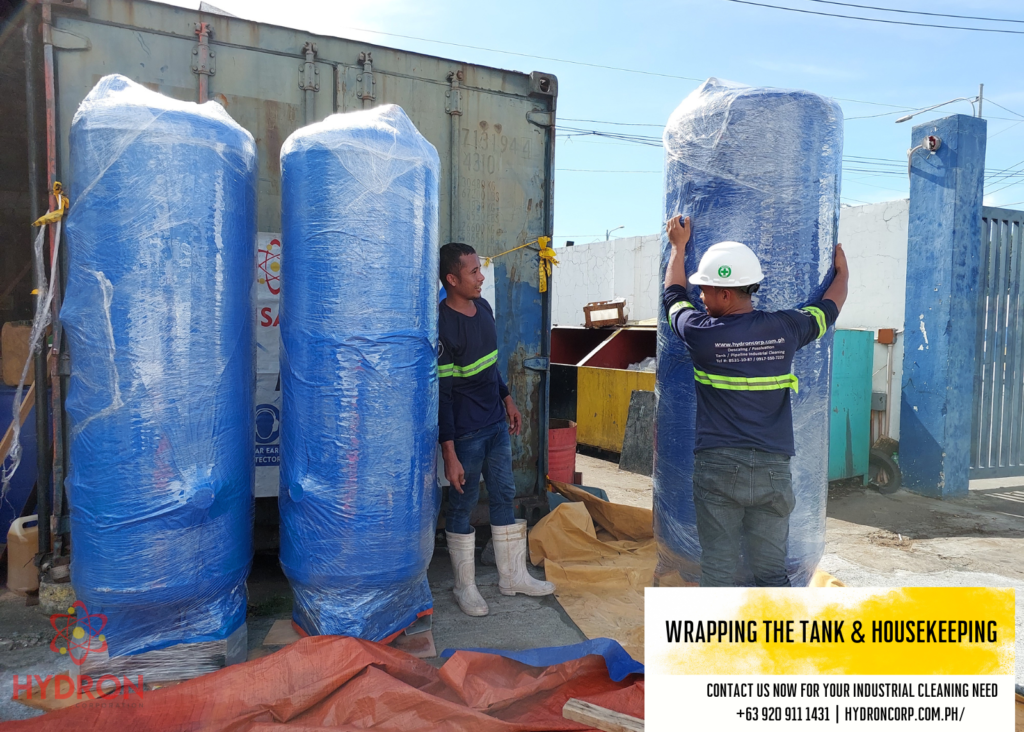How Tank Decontamination Safeguard our Environments and Promoting Safety
Tank decontamination is a critical process involving removing hazardous substances, contaminants, or residues from storage tanks. It is crucial in ensuring environmental protection, maintaining safety standards, and preventing potential health risks.
The Tank Decontamination Process

- Assessment and Planning
- The first step in tank decontamination is thoroughly assessing the tank’s contents and potential hazards. This assessment helps determine the appropriate decontamination method, the necessary safety measures, and the required equipment. Planning ensures that the decontamination process is done efficiently and effectively.
- Preparation and Isolation
- Before decontamination, the tank must be properly prepared and isolated, including disconnecting any external connections, such as inlet and outlet valves, to prevent the flow of materials. Adequate ventilation systems are implemented to control and remove potentially harmful fumes or gases.
- Removal of Residual Substances
- The next step involves the removal of residual substances from the tank. This can include chemicals, sludge, or other contaminants that may have settled at the bottom or adhered to the tank walls. Specialized equipment and cleaning agents are utilized to ensure thorough removal and minimize the risk of decontamination.
- Cleaning and Rinse
- The cleaning begins once the tank empties and the residual substances are removed. High-pressure water jets, cleaning agents, or mechanical scrubbing are employed to clean the tank surfaces thoroughly. The goal is to remove any remaining residues or contaminants, ensuring a clean and sanitized tank interior.
- Inspection and Quality Control
- After the cleaning process, a thorough tank inspection is conducted to ensure the effectiveness of the decontamination process. Quality control measures are implemented to verify that the tank meets the required safety standards and is free from any hazardous substances or residues.
- After the cleaning process, a thorough tank inspection is conducted to ensure the effectiveness of the decontamination process. Quality control measures are implemented to verify that the tank meets the required safety standards and is free from any hazardous substances or residues.

Why is Tank Decontamination Important?
Environmental Protection
Tank decontamination plays a vital role in environmental protection. It prevents the release of hazardous substances or contaminants into the environment, minimizing the risk of pollution to soil, water sources, and surrounding ecosystems. Proper decontamination ensures that tanks are clean and safe, reducing the potential for environmental damage.
Health and Safety
Decontaminating tanks is essential for maintaining health and safety standards. It protects workers, nearby communities, and the general public from potential exposure to harmful substances or contaminants. Removing hazardous materials reduces the risk of respiratory issues, skin irritations, or other health complications.

Regulatory Compliance
Complying with regulations and industry standards is of utmost importance regarding tank decontamination. Regulatory bodies impose these standards to ensure the safe handling, storage, and disposal of hazardous substances. Following proper decontamination procedures, businesses demonstrate their commitment to regulatory compliance and responsible environmental practices.
Prevention of Accidents and Contamination
Regular tank decontamination helps prevent accidents and contamination. Accumulated residues or contaminants can lead to leaks, spills, or tank failures, posing significant risks to personnel, property, and the environment. Proper decontamination reduces these risks, promoting a safer working environment and preventing potential disasters.
Longevity of Tanks
Tank decontamination contributes to the longevity of storage tanks. Removing corrosive substances or contaminants prevents deterioration, scaling, or other forms of damage that can shorten the lifespan of tanks. Regular decontamination and maintenance help preserve the structural integrity of tanks, reducing the need for costly repairs or replacements.

Tank decontamination is necessary to ensure environmental protection, promote health and safety, and prevent potential hazards. By following a systematic decontamination process, including assessment, preparation, removal of residual substances, neutralization, cleaning, and inspection, businesses can maintain regulatory compliance, protect the environment, and safeguard the well-being of workers and surrounding communities. Prioritizing tank decontamination minimizes risks and enhances the efficiency and longevity of storage tanks, contributing to a safer and more sustainable industrial operation.
